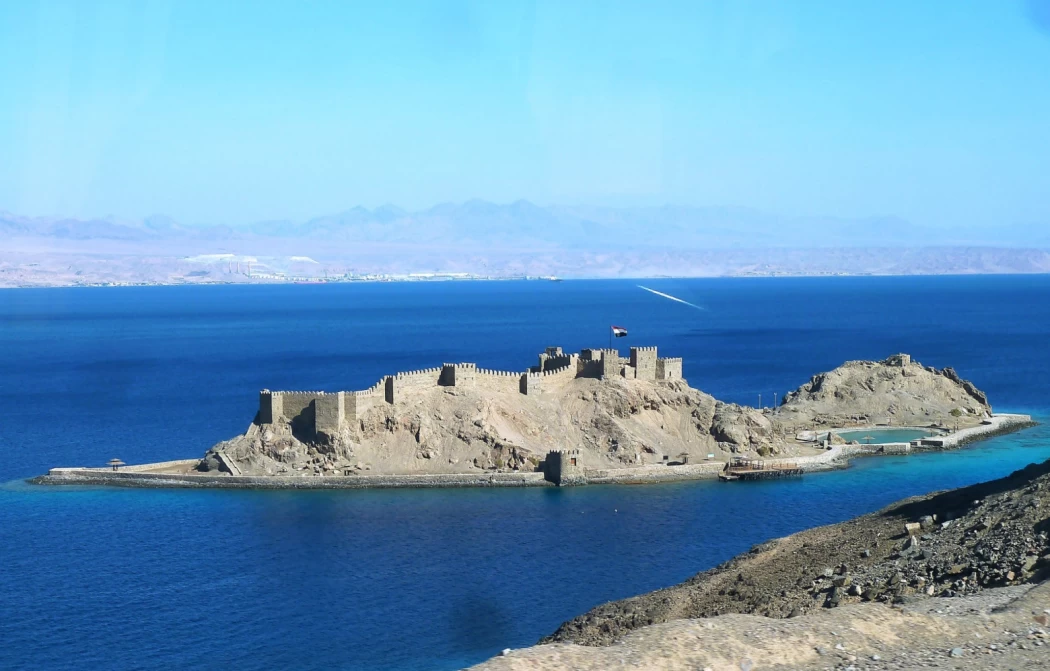
Facts about pharaohs island
Established by Saladin in the late twelfth century AD, it was erected to secure the Gulf of Aqaba against external invasions, and to secure the pilgrimage route and trade routes, especially after the Emir of Karak and Saladin's arch-enemy "Reginald" tried to conquer Arabia and seize Mecca and Medina, after the Just King, Saladin's brother, succeeded in refuting his attempts, The castle was built on two prominent protrusions on the island, surrounded by walls and towers for protection and observation, the castle contains barracks for soldiers, silos for food storage.
Geography
The island consists of 3.9 hectares (9.6 acres). It is separated from its western shore by a shallow lagoon, about 250 meters wide, accessible only by boat at high tide, which served as a protected Anchorage in the 13th century. In addition, the island has a harbor with an area of 35 × 65 meters, whose highly silted Basin provides additional protection. The island's location and port are at the crossroads of sea and land routes. The first connects to the south of the Arabian Peninsula and East Africa, while the other section goes north to Syria and through the Sinai to Egypt.
History
Israeli occupation of the island. Between 1975 and 1981, during the Israeli occupation of Sinai following the 1967 war, Israeli archaeologists explored the island. They discovered about 1,500 textile objects, some of which originated in India, Iran and Iraq, as well as the discovery of hundreds of pieces of baskets and ropes It is possible to interpret some of the materials as the evidence of the Explorer as evidence of commercial activity, perhaps between Egypt and the Crusader Kingdom of Jerusalem.
Egypt
After Egypt regained the Sinai, there were cleansing and restoration works carried out by Egypt in the early eighties. As a result of excessive restoration, the castle has lost some of its original appearance that it had in the Middle Ages. Along with the soldiers' Fortress, also located on the Sinai Peninsula, almost halfway between the city of Nakhl and Suez, the fortress on Pharaoh's Island was added to the UNESCO World Heritage List on July 28, 2003, due to its universal cultural value.














